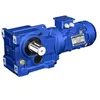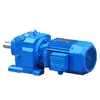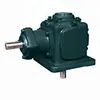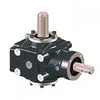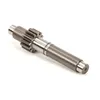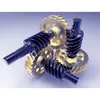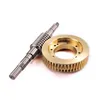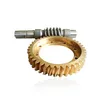gears are fundamental mechanical components used in a wide range of applications, from automotive systems to industrial machinery. They transmit torque and motion between rotating shafts, ensuring efficient power transfer. Our gears are engineered with precision, utilizing high-quality materials and advanced manufacturing processes to deliver durability, reliability, and optimal performance. This detailed guide covers the key parameters, specifications, and common questions about our gear products, designed to help you make informed decisions for your projects.
Understanding the technical specifications of gears is essential for selecting the right product. Below is a list of critical parameters that define our gear offerings:
For a comprehensive overview, refer to the table below outlining standard gear models and their specifications:
| Gear Type | Material | Module (mm) | Teeth Count | Pressure Angle | Face Width (mm) | Hardness (HRC) | Accuracy Grade |
|---|---|---|---|---|---|---|---|
| Spur Gear | Steel | 2.0 | 30 | 20° | 20 | 55 | DIN 8 |
| Helical Gear | Brass | 1.5 | 45 | 20° | 25 | 40 | AGMA 10 |
| Bevel Gear | Polymer | 3.0 | 20 | 14.5° | 15 | 30 | DIN 9 |
| Worm Gear | Steel | 4.0 | 50 | 20° | 30 | 58 | AGMA 11 |
Here are some frequently asked questions about gears, answered in detail to address common concerns:
What factors should I consider when selecting a gear for my application?
Consider the load capacity, operating speed, environmental conditions (e.g., temperature and humidity), material compatibility, and required precision. Our gears are designed with customizable parameters to fit specific needs, such as high torque or low noise requirements.
How do I maintain gears to ensure longevity?
Regular lubrication is crucial to reduce friction and wear. Inspect gears periodically for signs of damage, such as pitting or wear on teeth. Clean them to remove debris, and follow manufacturer guidelines for maintenance intervals based on usage intensity.
What is the difference between spur gears and helical gears?
Spur gears have straight teeth and are simpler, suitable for low-speed applications with minimal noise. Helical gears have angled teeth, providing smoother and quieter operation at higher speeds but may require thrust bearings due to axial forces.
Can gears be customized for specific ratios or sizes?
Yes, we offer custom gear manufacturing with adjustable teeth counts, modules, and materials to achieve desired gear ratios and dimensions. Provide your specifications, and our team will engineer gears to meet exact requirements.
What materials are best for corrosive environments?
For corrosive conditions, stainless steel or polymer composites are recommended due to their resistance to rust and chemical degradation. Brass is also a good option for less aggressive environments.
How do I calculate the gear ratio for a system?
The gear ratio is determined by dividing the number of teeth on the driven gear by the number on the driving gear. For example, if the driven gear has 60 teeth and the driving gear has 20, the ratio is 3:1, meaning the driven gear rotates once for every three rotations of the driver.
What are common causes of gear failure, and how can they be prevented?
Common causes include inadequate lubrication, overload, misalignment, and material fatigue. Prevent failure by ensuring proper installation, using correct lubrication, avoiding exceedance of rated loads, and conducting routine inspections.
Are there noise reduction options for gears?
Yes, opting for helical or bevel gears instead of spur gears can reduce noise. Additionally, precision manufacturing with higher accuracy grades and proper lubrication minimizes operational sound. Custom designs can include noise-dampening features.
